PLANTING NEW TREES
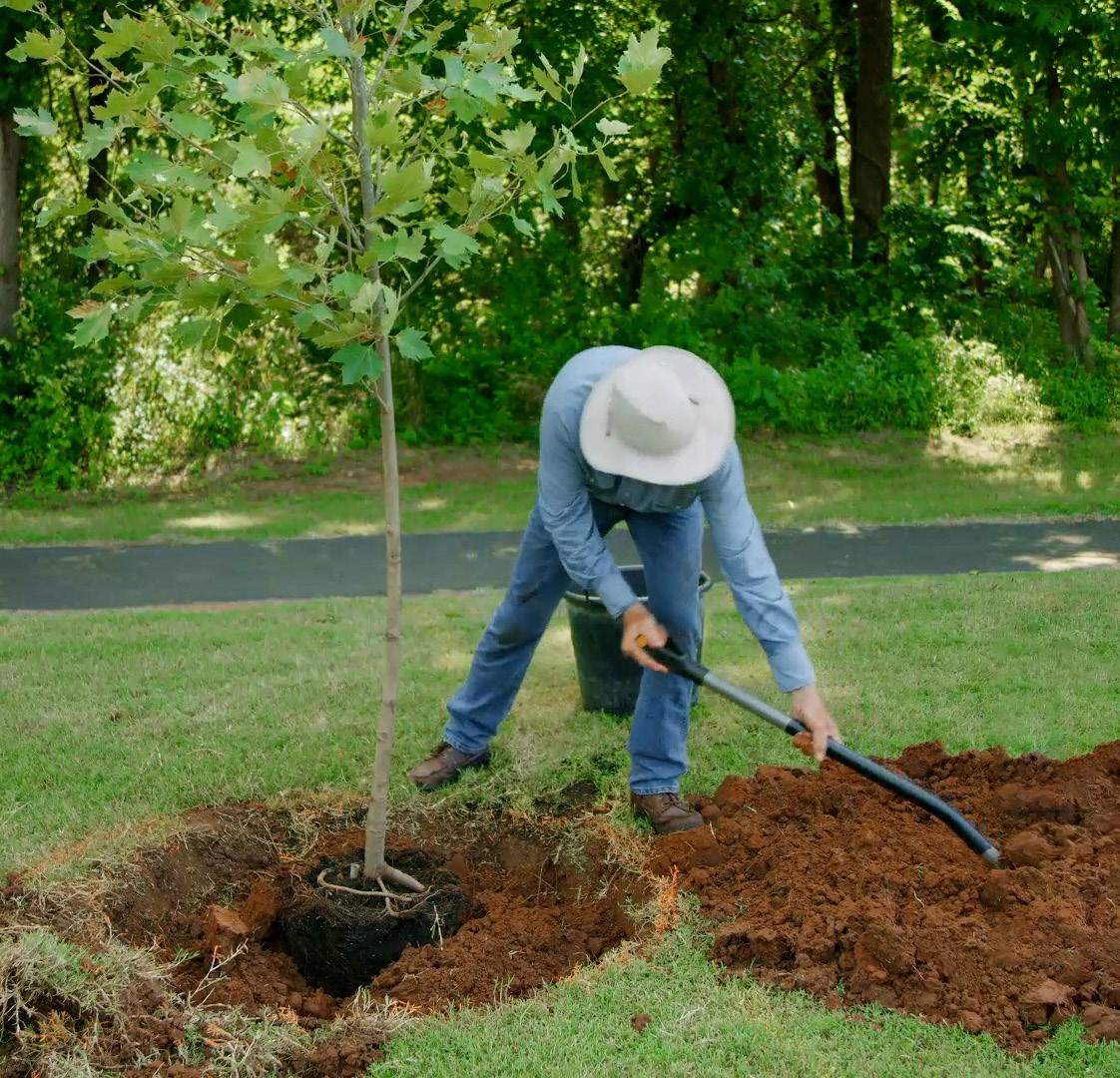
A PROJECT OF
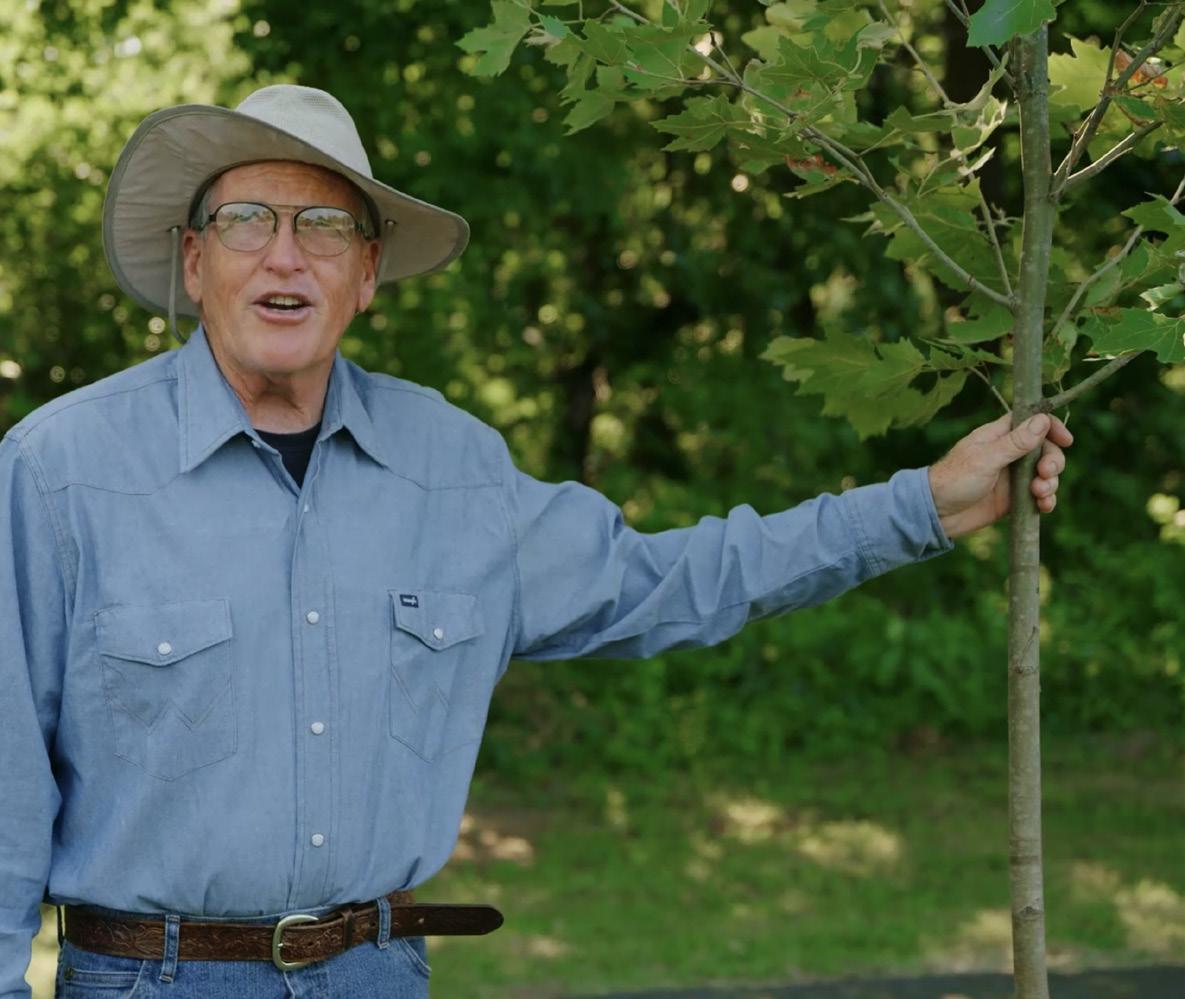
occf.org/releaf
Brian Dougherty
Director, Parks and Public Spaces, Oklahoma City Community Foundation
Supplies
Needed:
• Shovel
• Knife to cut burlap
• Hose & water source
• 2 bags of mulch (per tree)
• 6' stakes (optional)
• Nylon straps (optional)
Tree Planting Detail
Included:
• Tree(s)
• Identification Sign(s)

Diagram not to scale. See detailed instructions in the Planting the Tree section.

Tree Identification Sign
2–3” Mulch
dig!
Call 811 before you
Nylon Straps & 6’ Stakes if necessary
Trunk/ Root Flare
Water Hose inserted to bottom of hole
Original Soil Level

Cut Away Burlap/Twine or folded back halfway from root ball
Duck’s Nest Dam new topsoil
Right Trees, Right Place
to grow and prosper for 50, 75 or 100 years if the species and locations are properly selected. The tree’s mature height and width (NOT height and width at time of planting) are every bit as important as species selection when it comes to tree survival. Remember a cute little St. Bernard puppy also grows
When the right type of tree is planted and maintained in the correct location, a substantial community investment has been made, and its return on investment will be realized for decades to come. It is very important that we select tree species that are hardy and appropriate for this area based on
40’ from pole

30’
Large Trees
Medium Trees 25’ –40’ mature height
Small Trees

15’ from pole
10’ from sidewalk Call 811
Less than 25’ mature height
Larger than 40’ mature height from pole

before you dig!
Overview
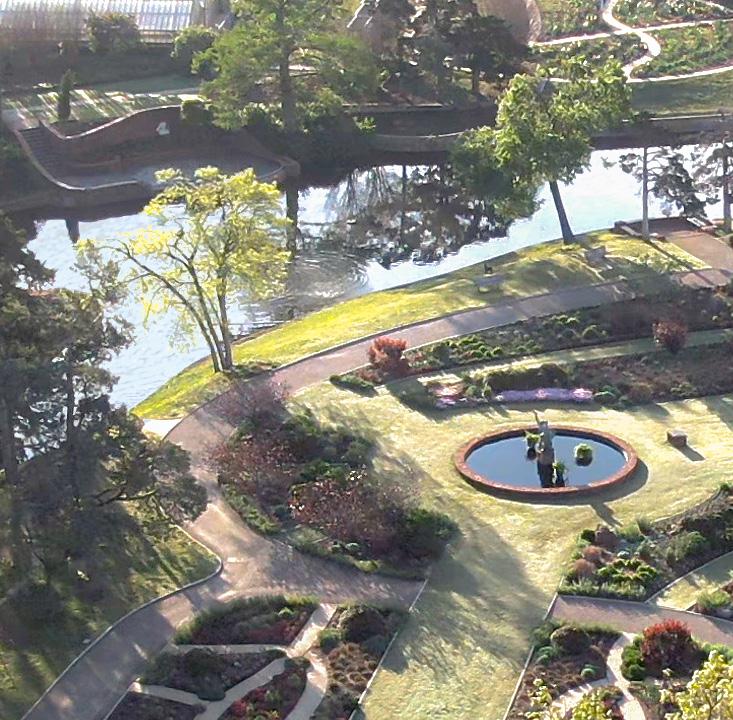
Geographically and environmentally, the majority of land that makes up Oklahoma City has evolved from native prairie. On the eastern border of the city is the Cross Timbers forest that includes a unique strand of post oaks and black jack oaks that form the division where the eastern forest meets the upland prairie grasslands. Before Oklahoma City was settled, trees west of the Cross Timbers in this region of upland prairie were often limited to the native species that had established along the creeks, rivers, ponds or wetland areas.
Today, the trees in this transformed urban prairie provide us with much-desired tree canopy. In addition to a multiplicity of environmental benefits, trees beautify our community. They provide shade and energy savings as they help to cool our homes, neighborhoods, schools, commercial districts and recreational areas. They also make a positive contribution to air and water quality, stormwater interception, nature corridors, quality of living, human well-being and other socioeconomic benefits throughout our entire community.
Utility Lines and Corridors
Utility lines for water, sewer, electricity and natural gas form a network of mazes that connect every home and building throughout our community. Some of these lines are very visible and strung from power pole to power pole. Others are buried below the ground and entirely invisible unless you dig and expose them.
Call 811 before you dig!

ALWAYS BE SAFE AND CALL 8-1-1 at least one week before digging any holes to verify all of the lines have been marked and you are digging a safe distance from any utility.
• Only plant low-growing shrubs or grasses under power lines.
• No trees should be planted closer than 10 feet from any underground utility lines, sidewalks, buildings or streets.
• Small variety trees such as redbuds, desert willows, vitex, yaupons and deciduous hollies should not be planted closer than 15 feet from any power lines. They should not be planted any closer than 20 to 30 feet from other trees.
• Medium variety trees such as Chinese pistache, Caddo maples, Shantung maples, golden raintrees, loblolly pines and Canaert junipers should not be planted closer than 30 feet from any power lines. They should also not be planted any closer than 30 to 35 feet from other trees.
• Large variety trees such as sycamores, oaks, elms, hackberries and Kentucky coffee trees should not be planted closer than 40 feet from any power lines. They should also not be planted any closer than 40 to 50 feet from other trees.
When to Plant
The best time to plant a new tree is in the fall when the trees are going dormant for the year and the soil temperatures are still warm enough for the roots to start establishing into the new surrounding soil. Trees are under the least environmental stress during their dormancy stage from late fall to early spring. Typically, some late summer and fall rains leave a nice reserve of moisture in the soil to benefit the new trees. The January and February months can complicate the planting of new trees because of frozen soil, ice storms and inadequate soil moisture. Early spring planting also works well, but shortens the amount of time the trees have to start establishing before the hot and dry summer months return.
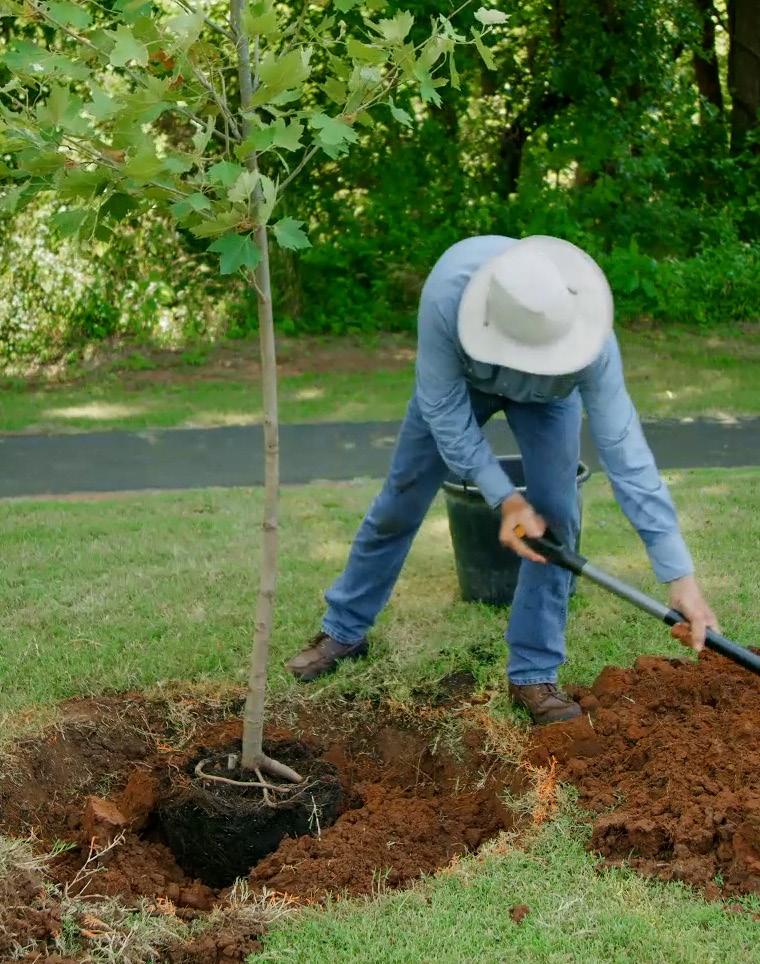
Nursery Growing Methods
Trees that come from the nurseries are typically grown
Container-grown trees range in size from 5 to 45 gallons. The trees have basically spent their entire life growing in a soilless bark medium and have been transplanted from smaller to larger containers as they have grown. The entire root system is contained within this container which extends the planting season as no roots need to be severed. Adversely, it is not unusual to see trees that have been grown in the same sized container too long and start developing circling roots that are very detrimental to the health and vigor of a good tree. The soilless growing medium also will need considerably more water to prevent dehydration during the establishment period after it is transplanted into the planting hole compared to a nursery tree grown in native soil
Balled & Burlapped (B&B)
These trees have been grown in the soil and dug from the field nursery after the first hard freeze in the fall. Depending on the size of tree that is being harvested, up to 80% of the roots can be cut off during the digging and transplanting process. The size of the ball of soil and roots that is harvested is determined by the size of tree that is being prepared for transplanting. The harvested ball of soil and roots will then be tightly wrapped and tied in a burlap material for shipping and planting. B&B trees are typically planted in the winter to minimize the stress that is already occurring from the root loss.

3. Root Control / Grow Bags
These trees are grown in a fabric bag in the nursery. They are usually dug at the same time as B&B trees but sometimes can be harvested earlier during the growing season since nearly all of the tree’s roots are contained in the bag. The fabric bag only allows a minimum number of roots to escape while allowing air and water to move freely through it. This also allows the tree to be grown in nursery soil and watered in a more typical nursery fashion. The tree is dug and transported in the growing bag, but then the bag is cut off the root ball during the planting installation.
Tree Varieties
Always remember that there is no perfect tree variety!
Each tree variety has its own positive and negative traits. Some grow shorter, some grow taller, some grow better in one soil than another and some have a stronger wood or fewer surfacing roots. Whether it is size, color, texture or any number of other traits, you want to match ‘your wants’ to what that type of tree is typically able to ‘deliver.’’
Resources to Help with Tree Varieties:
• Putting Down Roots (Second Edition) –City of Oklahoma City

• Forest Trees of Oklahoma –Oklahoma Department of Agriculture Forestry Services
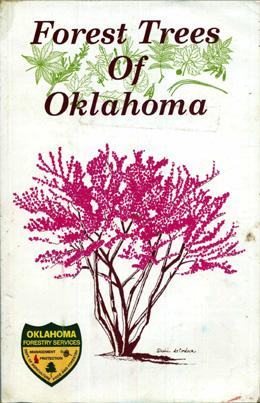
• Know It & Grow It –Dr. Carl E. Whitcomb
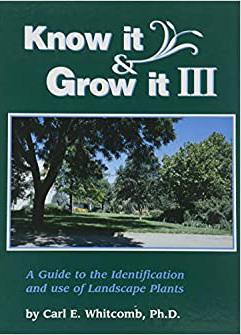
• Manual of Woody Landscape Plants –Dr. Michael Dirr

○ Read portion or entirety FREE at occf.org/releaf
○ Available at most bookstores
Planting the Tree
Digging & Planting:
Regardless of the growing method, tree variety or how large the tree or container is now, always dig the hole that you are planting into at least two and half to three times larger than the diameter of the root ball for the new tree. The hole should also only be dug as deep as the root ball is tall so that after the tree is planted and watered in, the tree is no deeper than it was growing at the nursery. If the tree is being planted in a lawn area, separate and discard the grass in its own pile so that it is not put back in the hole around the new tree.
You do not need to add any soil amendments to your hole when you are planting a new tree. During establishment, the tree roots will grow beyond the root ball and into the new surrounding soil. Be especially careful to handle the tree and root ball with care so that the root ball does not crack or break open which will damage the existing roots. If the tree was grown in a plastic container or a fabric grow bag, be sure to remove them before setting them in the hole. If the tree is balled and burlapped, leave the burlap around the root ball until the tree is set in the hole and half of the soil from the hole is backfilled around the ball. Then, untie or cut the nylon cord around the trunk and fold back the burlap so that one-third of the root ball is exposed. The top layer of burlap impedes water from entering the root ball if it is not folded back. At this time, you are ready to complete the planting process by putting the rest of the soil from the hole back around the root ball and gently firming it with your foot.
Duck’s Nests & Mulching:
Now that the tree is planted in the hole and standing straight, it is a great idea to add a duck’s nest around the outside of the hole. A duck’s nest is a six-inch-tall circular dam made from additional topsoil around the base of the tree and approximately the same diameter as the hole that was dug. The duck’s nest forms a nice
basin for water retention and a border for the mulch. Mulch should be added about 2 to 3 inches deep inside the duck’s nest. The mulch will help retain some of the moisture, minimize weed seed germination and prevent the surrounding grass from encroaching. Pull the mulch back away from the base of the trunk so that mulch is not touching the trunk which can cause problems for a new tree. The duck’s nest also provides a border which protects the trunk of the tree from weed eater and mower damage.
Staking or Not:
In Oklahoma where the wind and wind gusts seem to be the norm rather than the exception, staking new trees can be a necessary evil. Staking is typically accomplished by driving two six-foot T-posts or wooden stakes approximately a foot into the ground. They should be located directly across from each other, penetrating the ground outside of the newly dug hole. Nylon straps should be wrapped around the trunk and tied back to the stake on each side so that the tree is supported during any wind storms, but not so rigid that it cannot move. In the past, we staked every tree, but in more recent years, we stake based on the location, soil, time of year, etc. We have chosen not to stake many of our new trees and have not had any problems. My new recommendation is: Only stake the tree if you feel it is necessary, and if you do, be sure to use a nylon strap instead of wire and remove the stakes within the first year.
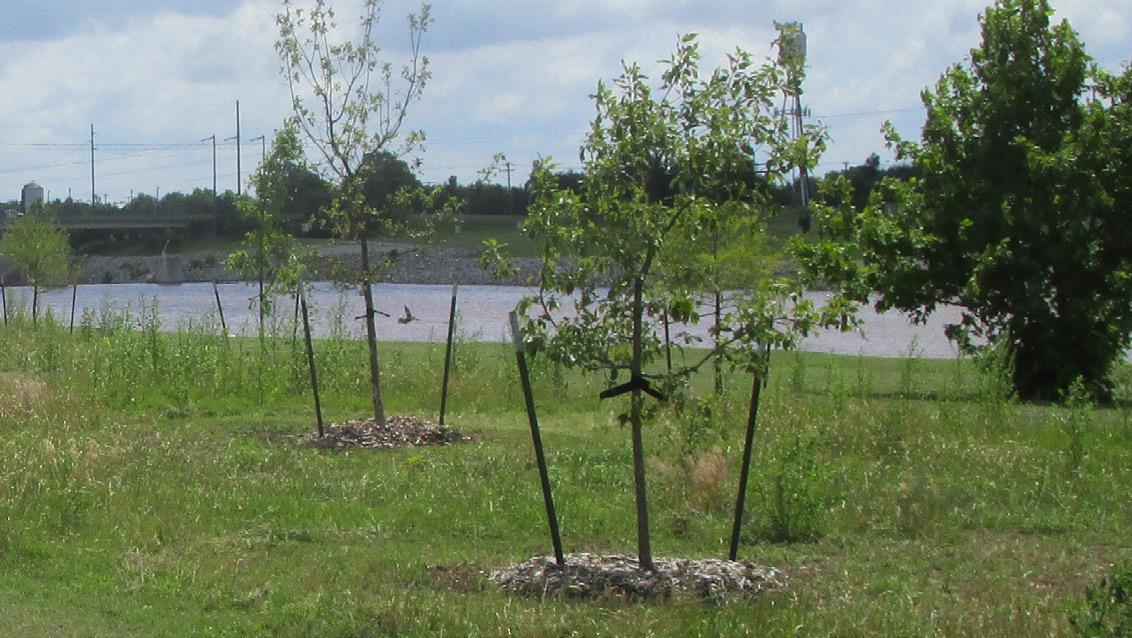
Maintaining the Tree
Watering and Follow-Up Maintenance:
Once the tree is planted, the duck’s nest built, mulch added inside the duck’s nest and staked if necessary, turn the hose on to a medium flow and push the end of a water hose into the backfilled soil until the hose reaches the bottom of the hole. Allow the water to completely fill the hole which will force all of the air pockets out and allow any of the surrounding soil to settle. Watering your new tree immediately after planting and before it gets dry is extremely important! Monitoring the soil moisture weekly is probably the most important maintenance requirement for the next three years. Twenty gallons of water a week should really keep your tree in good shape. The first year the tree has been planted is by far the most critical, and as the roots grow out into the surrounding soil, they are more capable of finding and absorbing moisture. Do not depend on a lawn sprinkler system to water in or provide enough water to establish a new tree. During the summer months is really when it is crucial to have a duck’s nest for moisture retention, so be sure to fill the duck’s nest with water at least once a week. Carefully spray glyphosate inside the duck’s nest on any encroaching vegetation two or three times during the summer to keep it grass free and minimize competition for moisture for the new tree roots.
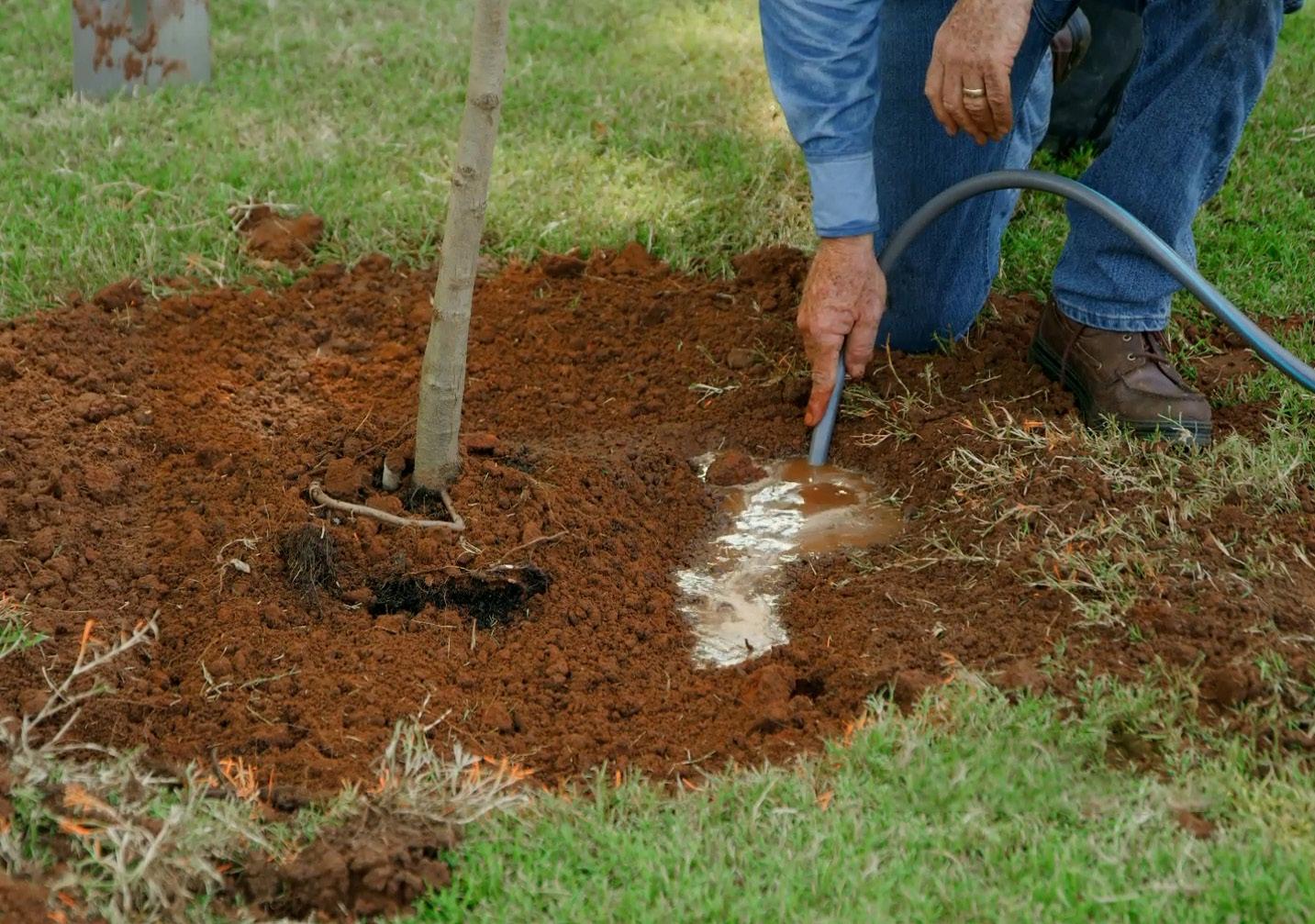
Ongoing Tree Maintenance:
Most soils have an ample supply of nutrients for good tree growth. During the establishment period, most trees will have some carry-over nutrients from the nursery mix or soil they were grown in. They will also receive some nutritional benefit if they have been planted in a lawn area that is being fertilized. It is a good idea to test your soil through the county extension for soil type, pH and nutritional values. These results will help you determine the next steps and ongoing feeding programs.
Next to planting the right tree in the right place, correct pruning is the best way to prevent future problems. As new branches sprout from the trunk on a new tree, decide whether to remove them or not. If a branch sprouts on the trunk 3 feet from the base of the tree, it will only get larger in length and diameter but will never move higher up on the trunk. If you want to have all of the limbs 6 feet above the ground, the lower limbs will need to be removed. There are always questions as to when you should remove the lower branches. My suggestion is to have one-third of the tree as trunk and two-thirds of the tree as leaves, branches and canopy. If you follow that rule, the height of the tree will help you determine when to remove the lower branches.

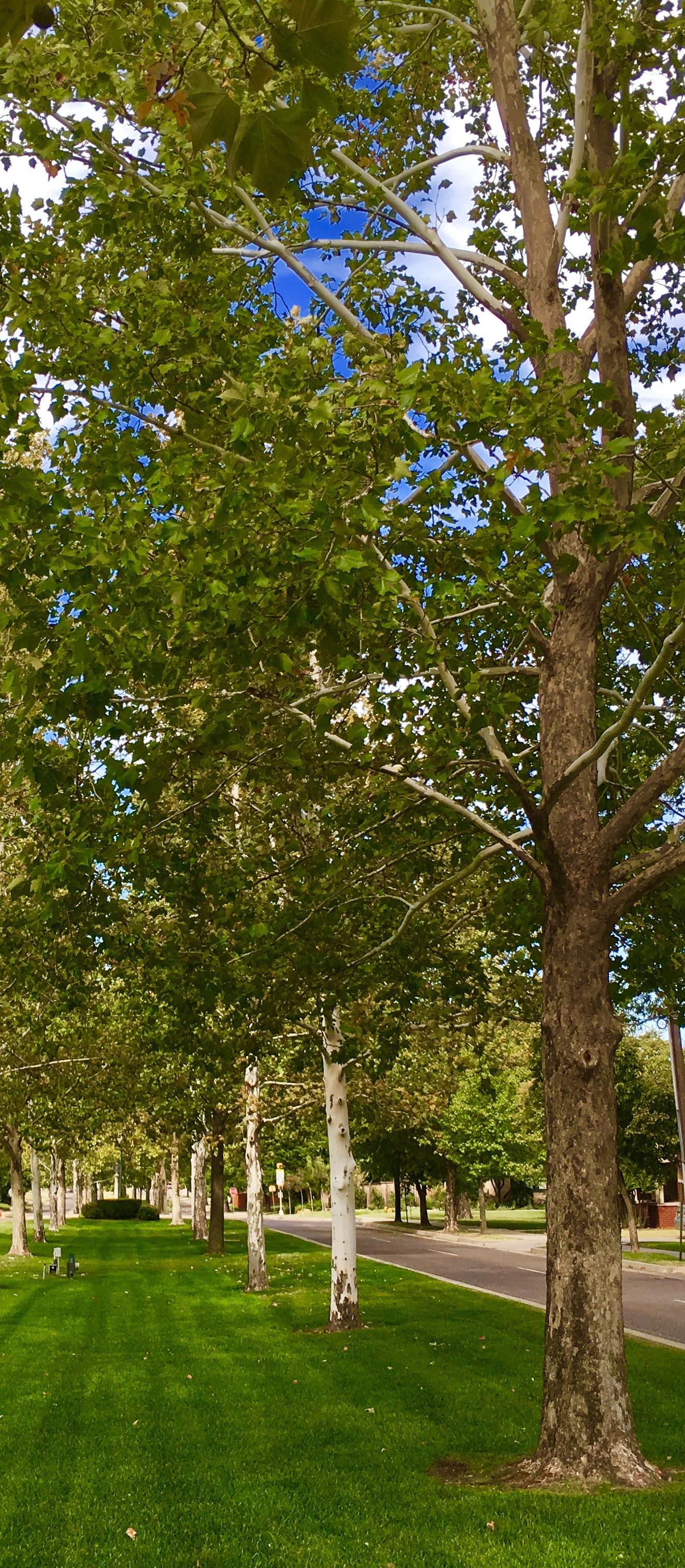

Contact Proper planning, selection, planting and maintenance of new trees can provide huge benefits for decades to come. Never underestimate the wonder of how a small acorn can transform into a mighty oak if only given a chance. Brian Dougherty Director, Parks and Public Spaces 405-606-2908 b.dougherty@occf.org THE SIMPLE WONDERS OF A TREE

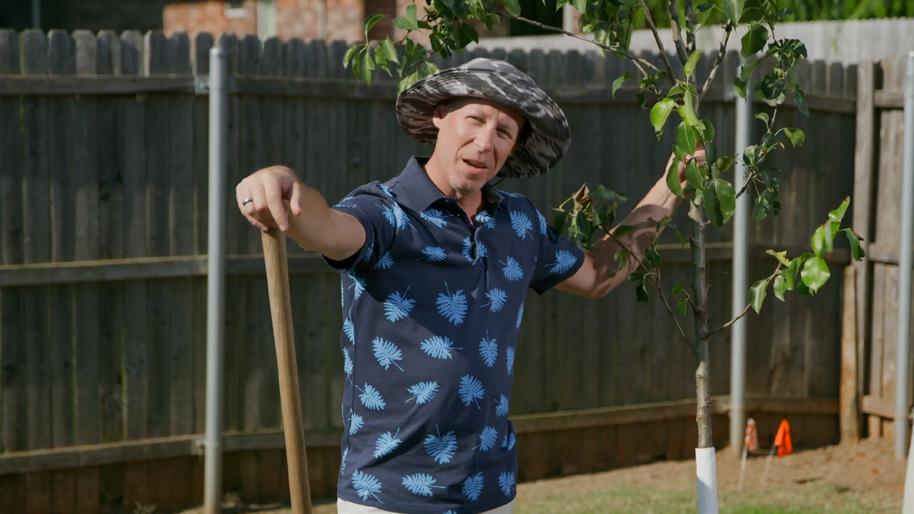
“The best time to plant a tree was 20 years ago, the second-best time is now.” — Chinese Proverb 1000 N. Broadway Ave. · Oklahoma City, OK 73102 405-235-5603 · occf.org Scan to watch our video.




























